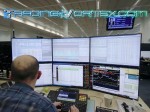Table Of Contents:
- Introduction to GBP/USD Trading:
Factors Influencing GBP/USD Trading:
Analyzing GBP/USD Trends:
Effective Trading Tips for GBP/USD:
Advanced Strategies for GBP/USD Trading:
GBP/USD Trading Platforms and Tools:
GBP/USD Trading Psychology:
GBP/USD Trading Mistakes to Avoid:
Conclusion: Mastering GBP/USD Trading.
Introduction to GBP/USD Trading:
Understanding the GBP/USD Pair and its Dynamics:
The dynamics of GBP/USD are influenced by a multitude of factors, including economic indicators, geopolitical events, interest rate differentials, and market sentiment. Traders often refer to GBP/USD as a volatile yet lucrative pair due to its responsiveness to global economic shifts and geopolitical developments. Movements in this pair are highly scrutinized, making it a preferred choice for traders seeking volatility and opportunities for profit.
- The GBP, representing the UK's economy, can be influenced by factors such as GDP data, inflation rates, employment reports, and Bank of England (BoE) policies.
- On the other side, the USD, tied to the United States, reacts to indicators like Non-Farm Payrolls, GDP figures, Federal Reserve decisions, and US economic health.
The GBP/USD relationship is also impacted by the economic ties between the UK and the US, as well as global financial markets' reactions to various events, making it crucial for traders to understand the intricate interplay between these economies and how they affect this currency pair's movement.
Importance of Trading Strategies in GBP/USD:
Given the volatility and sensitivity of the GBP/USD pair to a multitude of factors, the significance of well-crafted trading strategies cannot be overstated. Crafting a robust trading plan specific to this pair involves a comprehensive understanding of both fundamental and technical analysis.
Effective strategies encompass risk management techniques, trade timing, identifying entry and exit points, and adjusting to news-driven market movements. Traders engaging in GBP/USD trading should develop a versatile approach that considers various scenarios, from short-term fluctuations to long-term trends.
Additionally, strategies need to adapt to the ever-changing market conditions, making continual education and staying updated on global economic and geopolitical events crucial for success in trading GBP/USD. A well-defined strategy tailored to this particular currency pair is essential for traders aiming to profit from the Pound-Dollar dynamic in the forex market.
Factors Influencing GBP/USD Trading:
Economic Indicators Impacting GBP/USD Trading:
- GDP figures provide a comprehensive overview of the economic output and growth of each country. Any deviations from anticipated GDP figures can trigger significant movements in the GBP/USD pair.
- Inflation rates, gauged through Consumer Price Index (CPI) data, influence central bank decisions and currency valuation.
- Employment reports, such as Non-Farm Payrolls in the US and UK's employment figures, offer insights into labor market health, impacting currency strength.
- Trade balances, which encompass imports and exports, also impact GBP/USD as they reflect the economic relationship between the two nations.
- Furthermore, consumer spending reports and retail sales data reveal the strength of consumer sentiment, affecting currency movement.
Political Events and Their Effect on GBP/USD:
For instance, major political events like Brexit in the UK or changes in US government policies and leadership can substantially impact the GBP/USD exchange rate. The market reacts to such events based on perceptions of how they might affect economic policies, trade relationships, and overall stability, thereby influencing trader sentiment and currency valuations.
Role of Central Banks in GBP/USD Movement:
Central banks, particularly the Bank of England (BoE) and the Federal Reserve (Fed) in the UK and US respectively, wield significant influence over GBP/USD movements. Monetary policy decisions, including interest rate changes, quantitative easing measures, and forward guidance, directly impact the value of their respective currencies.
Statements and speeches by central bank officials, especially those hinting at future monetary policy directions, are closely watched by traders. Divergences in monetary policies between the BoE and Fed can cause substantial movements in the GBP/USD pair, as interest rate differentials influence capital flows and currency valuations. Understanding and monitoring these central bank actions and statements are crucial for traders seeking to profit from GBP/USD fluctuations.
Analyzing GBP/USD Trends:
Technical Analysis Techniques for GBP/USD:
Charting techniques aid in recognizing trends, whether they are upward (bullish), downward (bearish), or consolidating. These analyses enable traders to make informed decisions on entry and exit points, assess the strength of trends, and anticipate potential reversals or breakouts.
Fundamental Analysis: GBP/USD Market Trends.
Key economic indicators like GDP, inflation rates, employment reports, trade balances, and central bank policies are thoroughly assessed to gauge the fundamental strength of each currency and predict potential trends in the GBP/USD pair.
Sentiment Analysis and GBP/USD Trading Signals:
Additionally, traders often use trading signals derived from various sources like moving average crossovers, Bollinger Bands, or candlestick patterns to confirm potential trade opportunities in alignment with technical and fundamental analyses. These signals aid in validating trading decisions and fine-tuning entry and exit points based on the prevailing sentiment and trends in the GBP/USD market.
Effective Trading Tips for GBP/USD:
Risk Management Strategies for GBP/USD Trading:
Effective risk management is paramount in GBP/USD trading to safeguard capital and mitigate potential losses. Traders often employ strategies like setting stop-loss orders, determining position sizes based on risk tolerance, and diversifying portfolios to spread risk across multiple trades. Additionally, adhering to a predefined risk-reward ratio helps maintain consistency and discipline in trading.
Implementing proper risk management practices involves understanding market volatility, assessing individual trade risk, and employing tools like trailing stops or hedging techniques to protect against adverse market movements.
Best Times to Trade GBP/USD:
The GBP/USD pair experiences heightened volatility and liquidity during specific trading sessions, presenting optimal opportunities for traders. The most active times for GBP/USD trading coincide with the overlap between the London and New York trading sessions, typically between 8:00 AM to 12:00 PM EST.
Traders keen on engaging in GBP/USD trading should consider these peak hours when the market is most active, as increased liquidity often translates to tighter spreads and more significant price movements, offering enhanced trading opportunities.
Leveraging News and Events in GBP/USD Trading:
News and events play a pivotal role in GBP/USD movements, providing traders with opportunities for profitable trades. Staying informed about economic releases, central bank announcements, geopolitical developments, and unexpected news can significantly impact currency movements.
Traders should develop a reliable news source and an economic calendar to track scheduled events that may affect the GBP/USD pair. Being prepared to react swiftly to news-driven market movements can aid in capitalizing on potential trading opportunities.
Long-Term vs. Short-Term Strategies in GBP/USD:
Traders engaging in GBP/USD have the flexibility to adopt either long-term or short-term trading strategies based on their risk tolerance and investment horizon.
- Long-term strategies involve holding positions for extended periods, capitalizing on macroeconomic trends and fundamental shifts.
- Conversely, short-term strategies focus on exploiting intraday or short-term fluctuations, leveraging technical analysis and market sentiment to make swift trading decisions.
Traders should align their strategies with their trading goals, risk appetite, and the prevailing market conditions to optimize their approach in the GBP/USD market.
Advanced Strategies for GBP/USD Trading:
Hedging Techniques for GBP/USD:
Hedging strategies in GBP/USD trading involve mitigating potential risks by taking offsetting positions to protect against adverse market movements. Traders often utilize correlated currency pairs or financial instruments to hedge their exposure in the GBP/USD pair.
Using Derivatives in GBP/USD Trading:
Derivatives, including options and futures contracts, offer advanced tools for traders in the GBP/USD market. Options provide the right, but not the obligation, to buy or sell GBP/USD at a predetermined price within a specified timeframe. Futures contracts enable traders to speculate on the future price of GBP/USD without holding the underlying asset.
Sophisticated traders use derivatives to capitalize on market movements, manage risk exposure, and implement more complex trading strategies. However, leveraging derivatives requires a deep understanding of market dynamics and the intricacies of these financial instruments.
Advanced Chart Patterns in GBP/USD Analysis:
In-depth analysis of advanced chart patterns is a crucial aspect of GBP/USD trading for experienced traders. Patterns like Fibonacci retracements, harmonic patterns (such as Gartley, Bat, and Butterfly), and Wolfe Waves provide insights into potential price reversals or continuations.
Traders skilled in identifying these advanced patterns can anticipate possible entry and exit points, enhancing their ability to make informed trading decisions. Combined with other technical indicators, these chart patterns contribute to a comprehensive analysis of the GBP/USD pair, aiding in spotting trends and predicting future price movements.
GBP/USD Trading Platforms and Tools:
Overview of Trading Platforms for GBP/USD:
Numerous trading platforms cater to GBP/USD traders, offering diverse features, functionalities, and interfaces. MetaTrader 4 (MT4) and MetaTrader 5 (MT5) are popular choices, providing comprehensive charting tools, customizable indicators, and access to various markets. These platforms facilitate technical analysis, automated trading, and offer a wide range of order types.
Additionally, platforms like cTrader and NinjaTrader offer advanced charting capabilities, algorithmic trading functionalities, and extensive customization options. Traders often select platforms based on their trading preferences, technical requirements, and ease of use.
Essential Tools for Analyzing GBP/USD Trends:
Analyzing GBP/USD trends requires utilizing a suite of essential tools. Charting software with multiple timeframes, candlestick patterns, trendlines, and technical indicators such as moving averages, RSI, MACD, and Fibonacci retracements aids in comprehensive technical analysis.
Economic calendars providing real-time updates on key economic events, news feeds, and sentiment analysis tools help traders stay informed about factors influencing GBP/USD movements. Moreover, access to live market data, historical price charts, and order execution tools is crucial for making informed trading decisions.
Automation and Algorithmic Trading in GBP/USD:
Automation and algorithmic trading have gained prominence in GBP/USD trading. Traders use Expert Advisors (EAs) or trading robots coded with specific strategies to automate trade executions based on predefined criteria. These algorithms can incorporate technical indicators, price action patterns, and risk management protocols.
Algorithmic trading allows for swift execution of trades, eliminates emotional biases, and enables backtesting of strategies for optimization. Traders interested in automation often rely on programming languages like MQL (MetaQuotes Language) for MT4/MT5 or Python for more customized algorithmic strategies, enhancing their proficiency in trading the GBP/USD pair.
GBP/USD Trading Psychology:
Emotion Management in GBP/USD Trading:
Managing emotions is critical in GBP/USD trading to make rational decisions amidst the inherently volatile forex market. Emotions like fear, greed, and overconfidence can lead to impulsive trading actions and cloud judgment. Traders must maintain discipline and adhere to their trading plans to avoid emotional decision-making.
Implementing strategies such as setting predefined entry and exit points, using stop-loss orders, and taking breaks during periods of heightened volatility can help in emotion management. Additionally, keeping a trading journal to analyze emotional triggers behind trades aids in understanding and controlling emotional responses.
Developing a Trading Mindset for GBP/USD Success:
Successful trading in GBP/USD requires cultivating a resilient and disciplined mindset. Traders need patience, adaptability, and the ability to accept losses as part of the trading process. Developing a growth mindset involves continuous learning, embracing new strategies, and learning from both successes and failures.
Creating a structured trading plan with clear goals, risk management protocols, and defined strategies aligns traders with a focused and disciplined approach. Moreover, maintaining realistic expectations and avoiding emotional attachment to trades contribute to fostering a healthy trading mindset.
Overcoming Challenges in GBP/USD Trading:
GBP/USD trading presents specific challenges, including high volatility, sudden market shifts, and unexpected news events. Traders need to adapt to these challenges by staying informed, employing robust risk management strategies, and avoiding overexposure to the market.
Managing the psychological impact of losses or unexpected market movements is crucial. Traders should embrace a proactive approach, focusing on continual improvement, and reframing challenges as learning opportunities. Developing resilience and adaptability allows traders to navigate the challenges inherent in GBP/USD trading and emerge stronger from adverse situations.
GBP/USD Trading Mistakes to Avoid:
Common Pitfalls in GBP/USD Trading:
Several common pitfalls can hinder success in GBP/USD trading. Overtrading, or excessively entering into positions, can lead to increased transaction costs and dilution of focus, potentially eroding profits. Additionally, ignoring risk management principles, such as setting stop-loss orders or failing to diversify, exposes traders to excessive risk.
Another pitfall is chasing the market or trying to predict every price movement without a solid strategy. This behavior often results in emotional trading and can lead to losses. Furthermore, neglecting thorough analysis, whether technical, fundamental, or sentiment-based, can result in uninformed trading decisions.
Psychological Traps to Watch for in GBP/USD:
Psychological traps can significantly impact GBP/USD trading outcomes. Falling victim to confirmation bias, where traders seek information that aligns with their existing beliefs, can lead to overlooking contradictory signals and making biased decisions. Moreover, succumbing to fear of missing out (FOMO) might prompt impulsive trades based on others' successes, often resulting in suboptimal outcomes.
Another psychological trap involves revenge trading, wherein traders attempt to recover losses quickly by making aggressive trades. This emotional response often leads to further losses. Additionally, anchoring bias, where traders fixate on initial reference points for decision-making, can hinder adaptability and proper evaluation of market conditions.
Learning from Past GBP/USD Trading Errors:
Learning from past trading errors is essential for growth in GBP/USD trading. Analyzing previous trades, identifying recurring mistakes, and maintaining a trading journal help in recognizing patterns of errors. Traders can then develop strategies to mitigate these mistakes in future trades.
Moreover, seeking mentorship or joining trading communities facilitates learning from others' experiences. Embracing a growth mindset, being open to feedback, and continuously improving one's trading approach based on lessons learned from past errors are integral to evolving as a successful GBP/USD trader.
Conclusion: Mastering GBP/USD Trading.
Summarizing Key GBP/USD Trading Tips:
Mastering GBP/USD trading involves integrating key strategies and techniques. Understanding the dynamics of the pair, incorporating effective risk management, leveraging technical and fundamental analyses, and being mindful of psychological biases form the foundation of successful trading. Utilizing advanced strategies like hedging, algorithmic trading, and analyzing chart patterns further refines trading prowess.
Looking Ahead: Continuous Improvement in GBP/USD Trading.
The world of GBP/USD trading is dynamic and ever-evolving. Continuous improvement is crucial for staying ahead in this market. Traders should commit to ongoing learning, staying updated on economic events and market shifts, and refining their strategies to adapt to changing conditions. Engaging with trading communities, seeking mentorship, and exploring new tools and techniques contribute to a trader's growth.
Encouragement and Final Thoughts on GBP/USD Profits:
Profitable trading in GBP/USD demands patience, discipline, and a resilient mindset. While profitability is a goal, it's essential to approach trading with a balanced perspective. Emphasizing consistency over sporadic gains, acknowledging that losses are inherent in trading, and focusing on the process rather than solely on profits is crucial.
Encouragement to traders is to maintain discipline, manage emotions, and embrace a continuous learning journey. Every trade, win or loss, offers insights and opportunities for improvement. Mastering GBP/USD trading isn't just about financial gains; it's a journey of personal and professional development, fostering a deeper understanding of the intricate dynamics within the forex market.









































 TradingVortex.com® 2019 © All Rights Reserved.
TradingVortex.com® 2019 © All Rights Reserved.